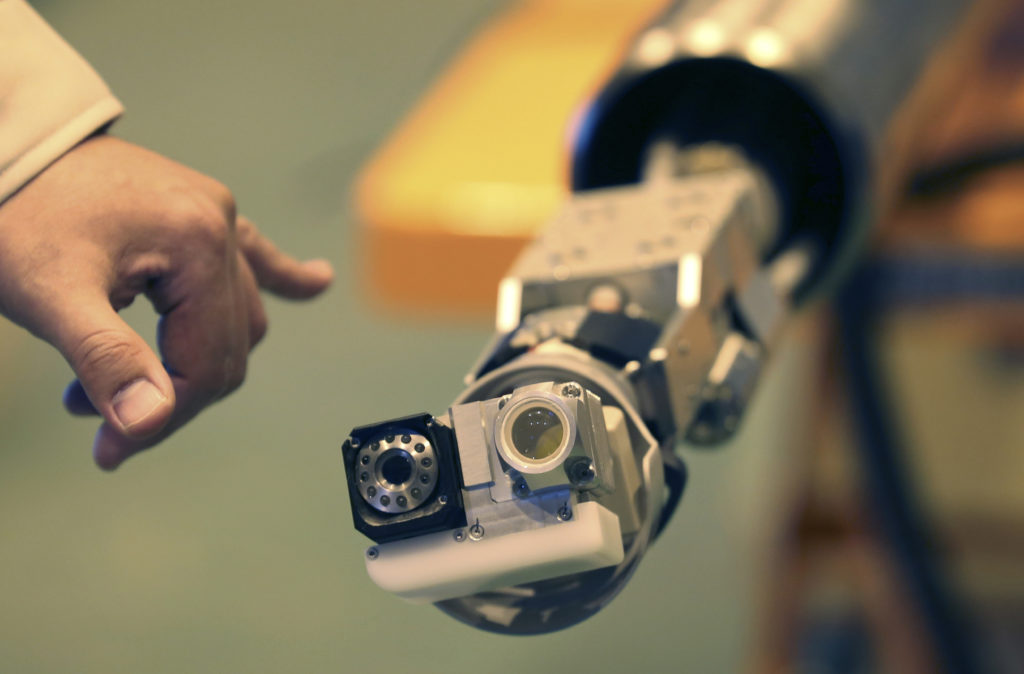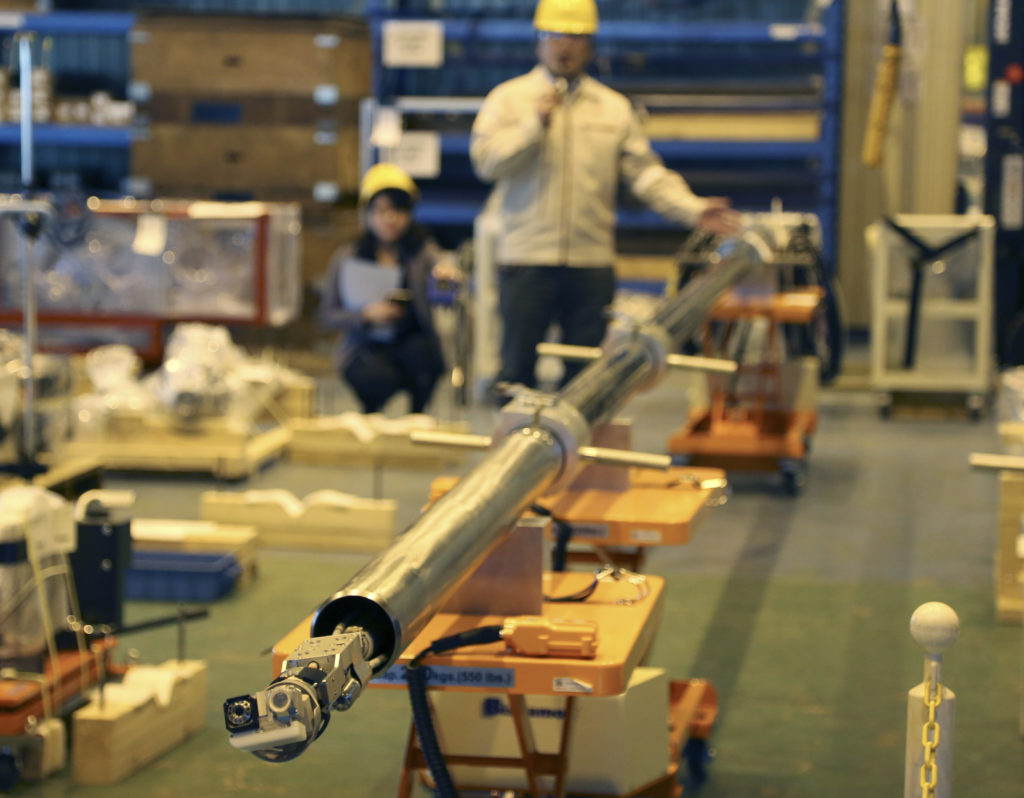Toshiba unveils device for Fukushima nuclear reactor probe

Toshiba Corporation unveiled a pan-tilt camera developed by the Toshiba Corp. and the International Research Institute for Nuclear Decommissioning (IRND), designed to inspect the interior of the damaged primary containment vessel of the Fukushima Dai-ichi Nuclear Power Station Unit 2 in Yokohama, Friday, Dec. 22, 2017. The device shown to media Friday is 13 meters (43 feet) long and designed to give officials a deeper view into the nuclear plant’s Unit 2 primary containment vessel, where details on melted fuel damage remain largely unknown. (AP Photo/Koji Sasahara)
YOKOHAMA, Japan (AP) — Toshiba Corp.’s energy systems unit on Friday unveiled a long telescopic pipe carrying a pan-tilt camera designed to gather crucial information about the situation inside the reactor chambers at Japan’s tsunami-wrecked Fukushima nuclear plant.
The device is 13 meters (43 feet) long and designed to give officials a deeper view into the nuclear plant’s Unit 2 primary containment vessel, where details on melted fuel damage remain largely unknown.
The Fukushima plant had triple meltdowns following the 2011 quake and tsunami. Finding details about the fuel debris is crucial to determining the right method and technology for its removal at each reactor, the most challenging process to safely carry out the plant’s decades-long decommissioning.
Japan’s stricter, post-Fukushima safety standards also require nuclear plant operators elsewhere to invest more time and money into safety measures.
On Friday, Kansai Electric Power Co. announced that it would decommission two idle reactors at the Ohi Nuclear Power Plant in western Japan, citing the difficulty of adding all the safety requirements at the nearly 40-year-old reactors that would be needed to get approval for their restart.
Reports have said it would cost about 58 billion yen ($500 million) and take 30 years to decommission a reactor, about half the estimated cost to restart one.

Toshiba Corp. unveiled its pan-tilt camera design with the International Research Institute for Nuclear Decommissioning (IRND), to inspect interior of damaged primary containment vessel of Fukushima Dai-ichi Nuclear Power Station Unit 2 in Yokohama, Friday, Dec. 22, 2017. The device shown to media Friday is 13 meters (43 feet) long and designed to give officials a deeper view into the nuclear plant’s Unit 2 primary containment vessel, where details on melted fuel damage remain largely unknown. (AP Photo/Koji Sasahara)
Also Friday, Japan Nuclear Fuel said that it was postponing the planned launch of its trouble-plagued spent fuel reprocessing plant by three more years until 2021. It cited delayed approval by the authorities. It also said it was postponing the planned manufacturing of fuel from recycled plutonium and uranium.
The mission involving Toshiba’s new probe at Fukushima’s Unit 2 reactor could come as soon as late January. Company officials said the new device will be sent inside the pedestal, a structure directly below the core, to investigate the area and hopefully to find melted debris.
The device looks like a giant fishing rod about 12 centimeters (4.7 inches) in diameter, from which a unit housing the camera, a dosimeter and thermometer slowly slides down. The probe, attached by a cable on the back, can descend all the way to the bottom of the reactor vessel if it can avoid obstacles, officials said.
Two teams of several engineers will be tasked with the mission, which they will remotely operate from a radiation-free command center at the plant.
A simpler predecessor to the pipe unveiled Friday had captured a limited view of the vessel during a preparatory investigation in February. A crawling robot sent in later in February struggled with debris on the ground and stalled in the end due to higher-than-expected radiation, its intended mission incomplete.
The upgraded probe has been co-developed by Toshiba ESS and International Research Institute for Nuclear Decommissioning, a government-funded unit of construction and nuclear technology companies over the past nine months. KI